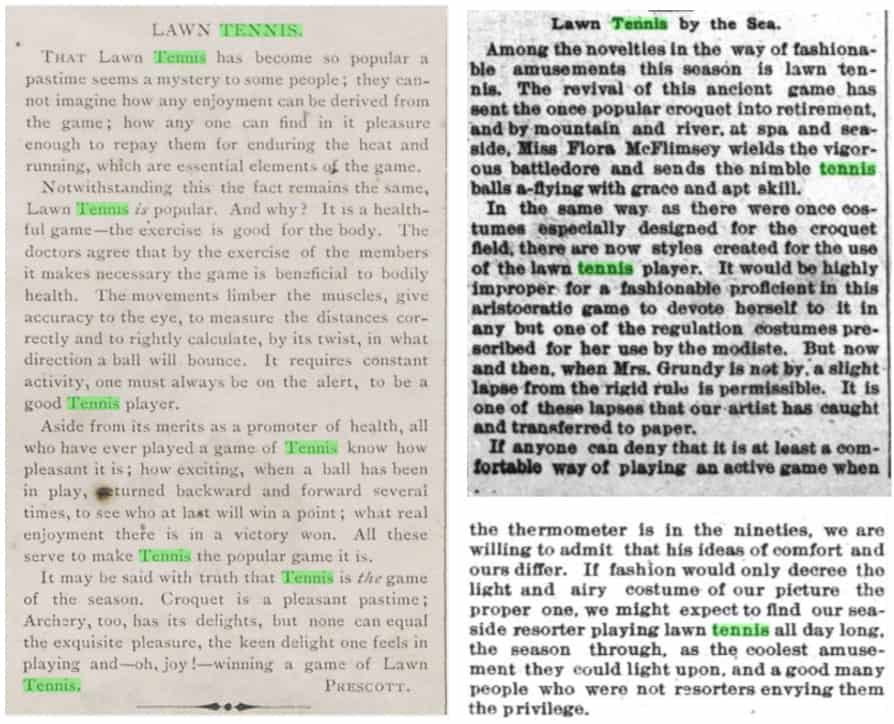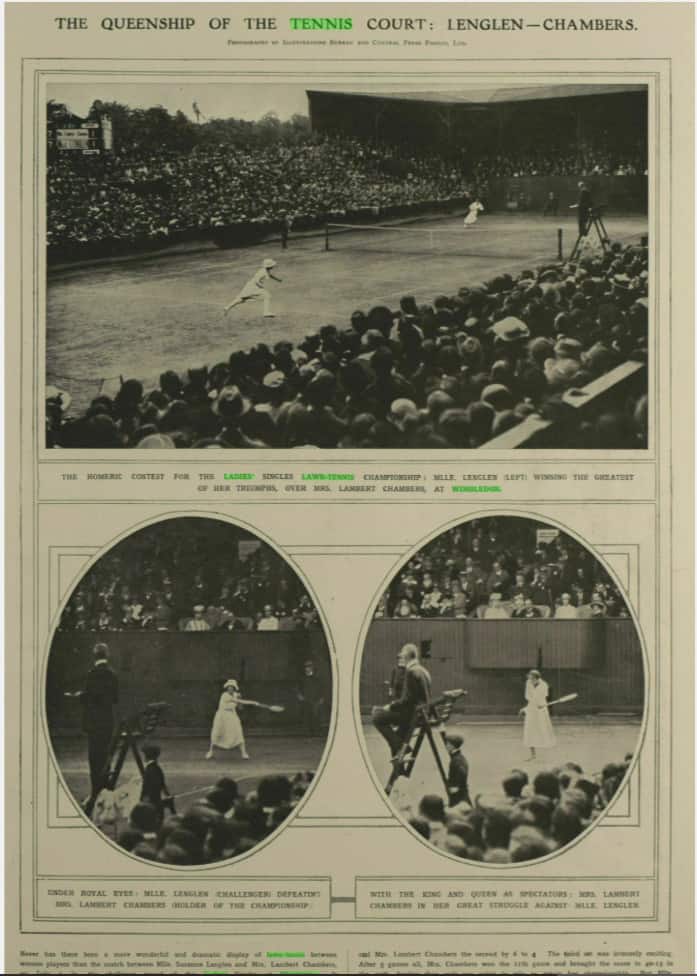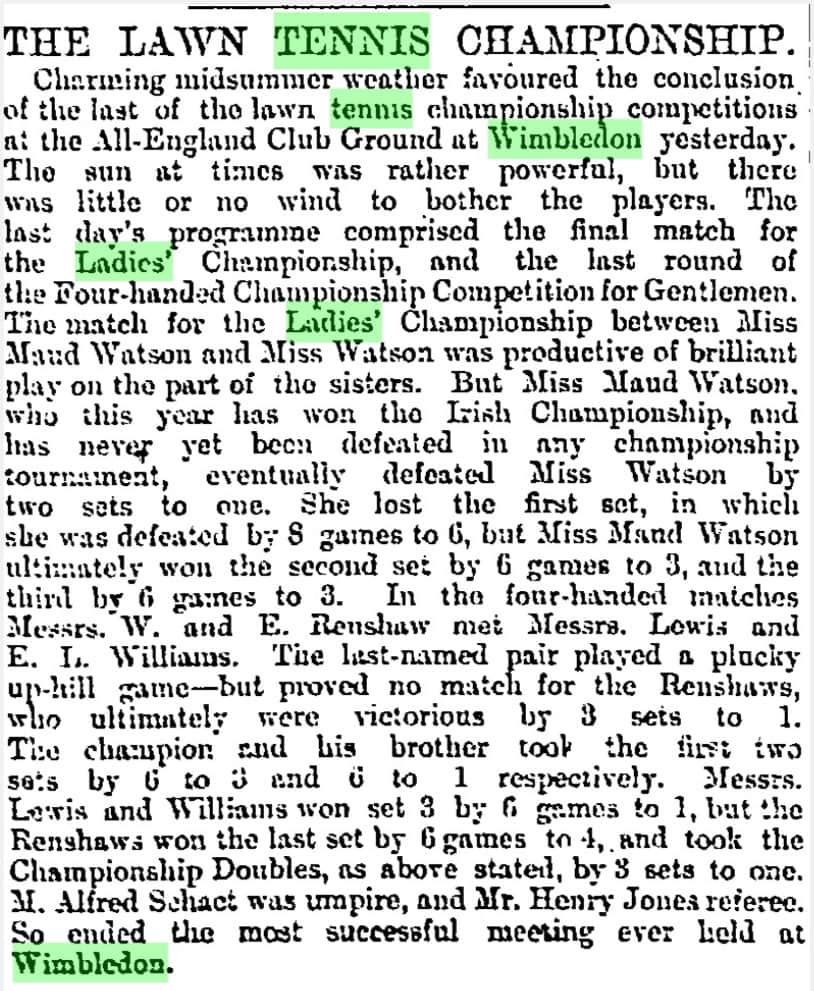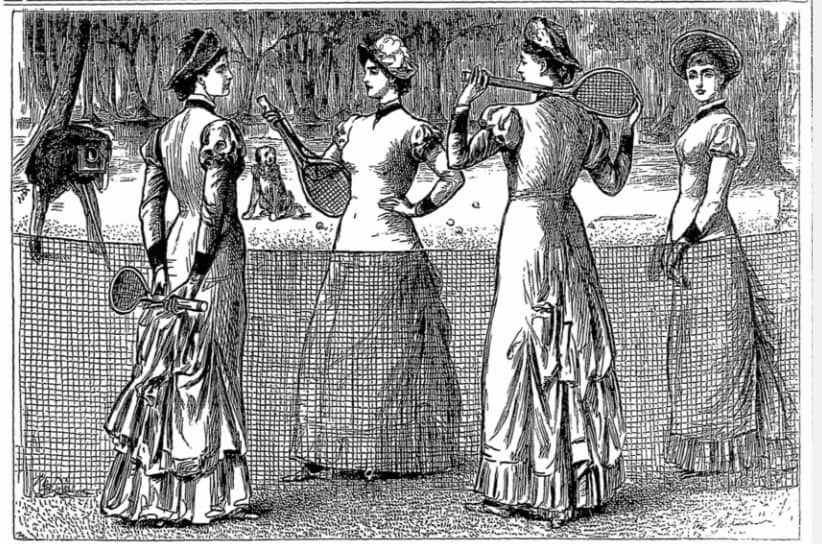│By Carolyn Beckford, Gale Product Trainer in the UK and Europe│
As we come to the end of the first week of Wimbledon, with the annual buzz and excitement very much in full-flow, we decided to use Gale Primary Sources to look back at the evolving history of tennis and the Wimbledon Championships.
Jeu de paume to tenez to tennis
The game of tennis had its genesis in northern France. The original game, known as jeu de paume, which translates as ‘game of the palm’, was played prior to the invention of rackets by hitting the ball with the palm of the hand. Ouch! The earliest reference to this game in Gale Primary Sources is found in a monograph in the Sabin Americana archive, entitled Histoire de la Nouvelle France (1611).

The French royal court, and Louis X in particular, were fond of the game that would eventually evolve into what we now know as tennis. Louis X (1289 – 1316) was such a keen player he was reported to be the first person to construct an indoor court so he could play privately, and not be prohibited by inclement weather. The idea spread across royal palaces in Europe.
Tennis continued to flourish in the royal courts of France. A title published in 1694, now found in Gale’s Making of the Modern World archive, describes the tennis court at the Palace of Versailles that was used by Louis XIV as the biggest in all of France, measuring fifty-seven by twenty feet.

Centuries later we can find an article published in 1929 in The International Herald Tribune describing the restoration of the indoor hall where many games of jeu de paume were played.
!["Versailles Salle Du Jeu De Paume Will Be Restored." New York Herald [European Edition], 26 Sept. 1929, p. 9. International Herald Tribune Historical Archive 1887-2013](https://www.gale.com/intl/blog/wp-content/uploads/2019/07/image-3.png)
Following the invention of the racket, the game began to be called ‘tennis’, which comes from the French word tenez, meaning ‘hold, receive or take’. The term would have been a command from the server.
In the below lyrics, published in around 1760, and ‘sold at the printing-office in Bow church-yard, London’ we see reference to a tribute of tennis balls used in political disputes between the French and English kings.
![King Henry V. his conquest of France in revenge sor [sic] the affront offered him by the French King. In sending him (iustead [sic] of the tribute due) a ton of tennis-balls. Printed and sold at the printing-office in Bow church-yard, London, [1760?]. Eighteenth Century Collections Online](https://www.gale.com/intl/blog/wp-content/uploads/2019/07/image-4.png)
With the invention of the lawn mower, the introduction of lawn tennis in Britain gathered pace. Here the game was played on modern-style grass courts as well as on cricket ovals, fields, pitches and greens.
The below monograph in Eighteenth-Century Collections Online advertises ‘fashionable games’ being played in London, of which tennis was one.

Eighteenth-Century Collections Online http://link.galegroup.com/apps/doc/CW0102075180/GDCS?u=webdemo&sid=GDCS&xid=4b10c9ef
One reason lawn tennis was so popular is because it was seen as a way to maintain good health, as referenced below in sources from Gale’s American Amateur Newspapers archive. It was soon so popular in Britain, it was causing the retirement of croquet, as referenced in the source below from Crime, Punishment and Popular Culture.

Right “Lawn Tennis by the Sea.” National Police Gazette, 30 July 1881, p. 6+. Crime, Punishment, and Popular Culture 1790-1920 http://link.galegroup.com/apps/doc/KNFJWY356105267/GDCS?u=webdemo&sid=GDCS&xid=b249f378
With this increasing popularity, the article below, ‘The Tennis Season,’ found in Nineteenth-Century Collections Online instructed citizens how they could prepare for the season – and perhaps tailor their own lawns to tennis courts if they so desired.


Wimbledon: The All England Lawn Tennis Club
The All England Croquet Club was founded in 1868 in Wimbledon. Croquet was already in decline due to the rise of tennis, so the name was changed in 1877 to The All England Croquet and Lawn Tennis Club and the first Lawn Tennis Championship was held. In 1882 ‘croquet’ was dropped from the name altogether and it was, and still is, called The All England Lawn Tennis Club.
The All England Croquet Club was founded in 1868 in Wimbledon. Croquet was already in decline due to the rise of tennis, so the name was changed in 1877 to the All England Croquet and Lawn Tennis Club and the first Lawn Tennis Championship was held. In 1882 ‘croquet’ was dropped from the name altogether and it was, and still is, called The All England Lawn Tennis Club.
The Championships at Wimbledon is the oldest tennis tournament in the world. It is the third grand slam tournament in the tennis calendar and the only tournament played on an outdoor grass court, keeping in line with its origins.
One thing that distinctly separates The Championships at Wimbledon is tradition; the entire tournament is littered with traditions from clothing, to marketing, to the structure of the tournament. Wimbledon is authentic and unmistakably unique, capturing historic details such as radically changing fashions, pony rollers used to keep the courts in prime condition, the transition from black and white to colour TV broadcasts, the switch to yellow tennis balls, strawberries and cream, and a retractable roof, to name a few. Wimbledon is and has always been unique.
Just to highlight one of the distinctive features of Wimbledon, the dress; it is the only grand slam tournament with a specific dress code. Below are some of the various fashions that have been worn in tennis games across the ages, taken from Punch Historic Archive and Crime, Punishment and Popular Culture.

Right “Hygienic Excess.” Punch, 18 Oct. 1879, p. 174. Punch Historical Archive, 1841-1992 http://link.galegroup.com/apps/doc/ES700241942/GDCS?u=webdemo&sid=GDCS&xid=cb83a5ef
The traditions of Wimbledon include competitors wearing all white, as can be seen in the images below in the Illustrated London News Historical Archive, from the time they enter the grounds. This dress code includes hats, shoes and socks, and it applies to undergarments and practice apparel as well. Medical support staff and assistants are also required to wear white. Players can be subjected to a fine if other colours are visible.

The Illustrated London News described matches from the first Championship in July 1877 as ‘keenly contested’ so we can see Wimbledon was competitive from the outset.

The first Championship included the best players in England and it was built around the idea of ‘survival of the fittest’ so it was held over several days. It was eventually won by Spencer Gore.

The ladies’ tournament started in 1884 and the first winner was Maud Watson.

In 2007, the female winners received the same cash awards as the male winners for the first time in history. This is still unusual at other grand slam tournaments.
The 100th anniversary of the women’s game was celebrated with great pomp, including a female military band, female driving team, more ball girls than ball boys, the official Wimbledon guide was pink and flowers were delivered to all the female players on their first day of play.

Since the start of The Championships at Wimbledon in 1877, it has been a unique and highly anticipated tennis tournament. Whilst many of the somewhat elaborate traditions have continued, the focus has always remained on the high-quality tennis being played. Throughout this year’s tournament, it will no doubt be the same.
Blog post cover image citation: “Hygienic Excess.” Punch, 18 Oct. 1879, p. 174. Punch Historical Archive, 1841-1992 http://link.galegroup.com/apps/doc/ES700241942/GDCS?u=webdemo&sid=GDCS&xid=cb83a5ef

